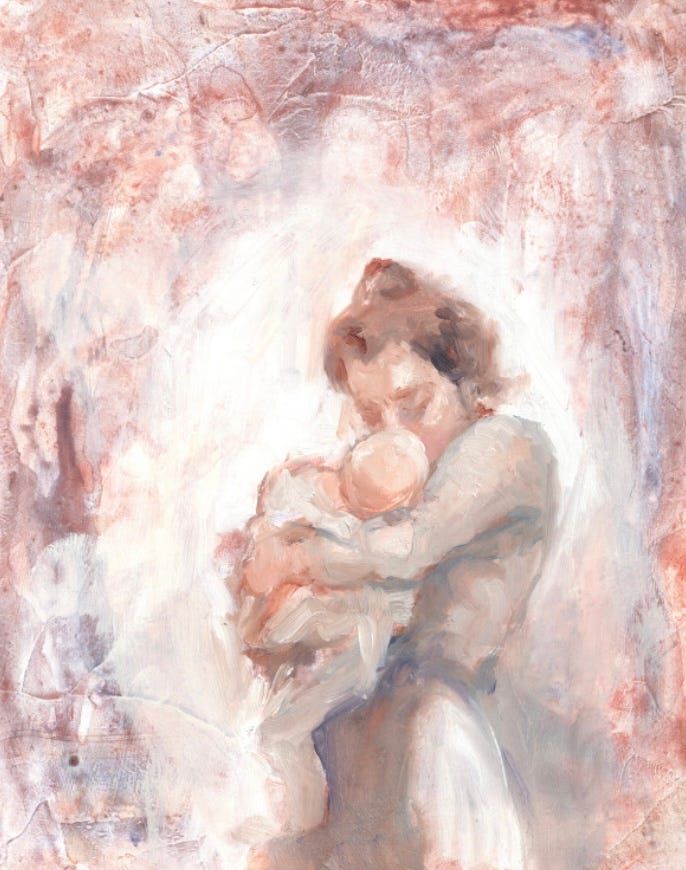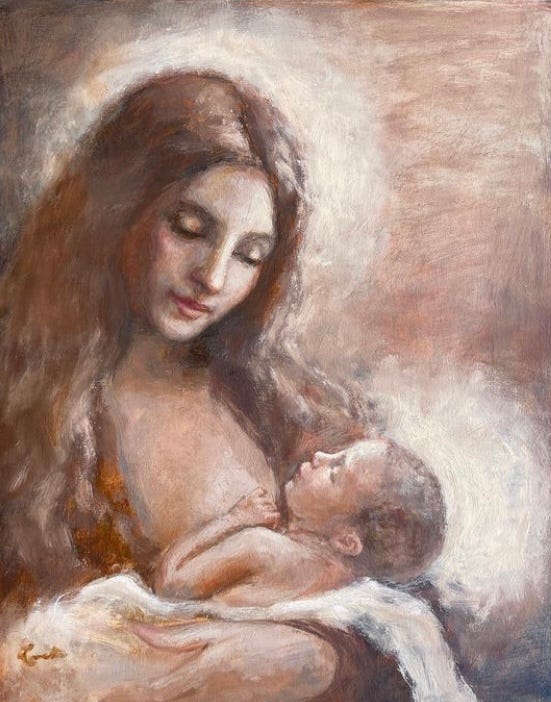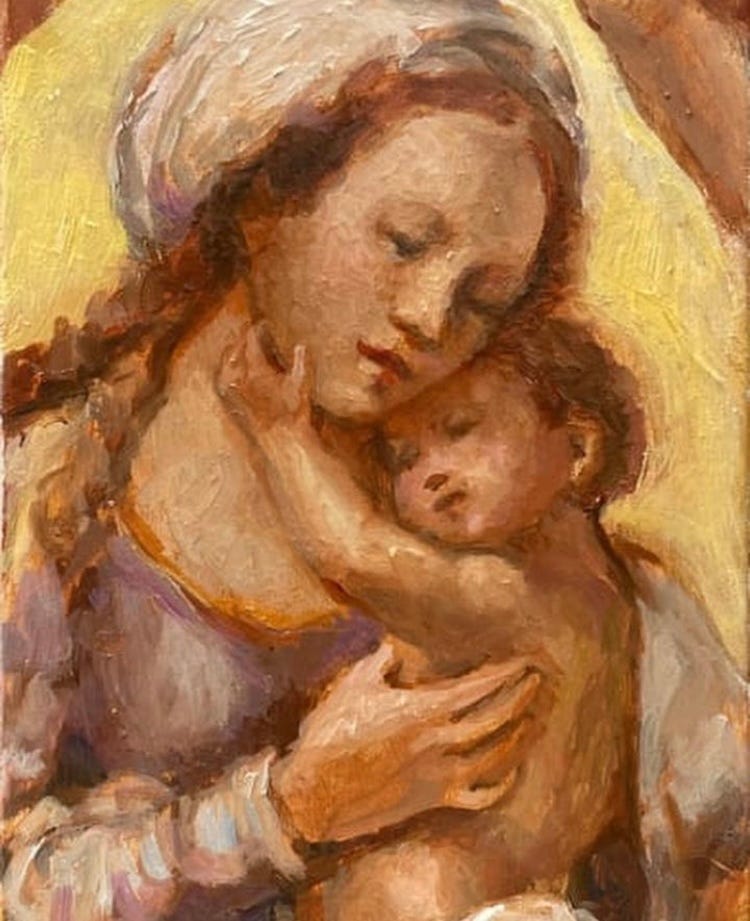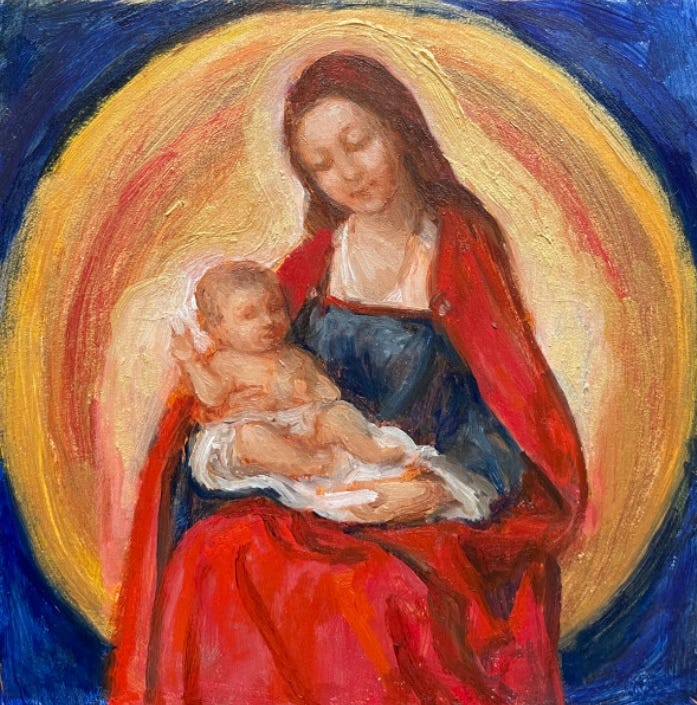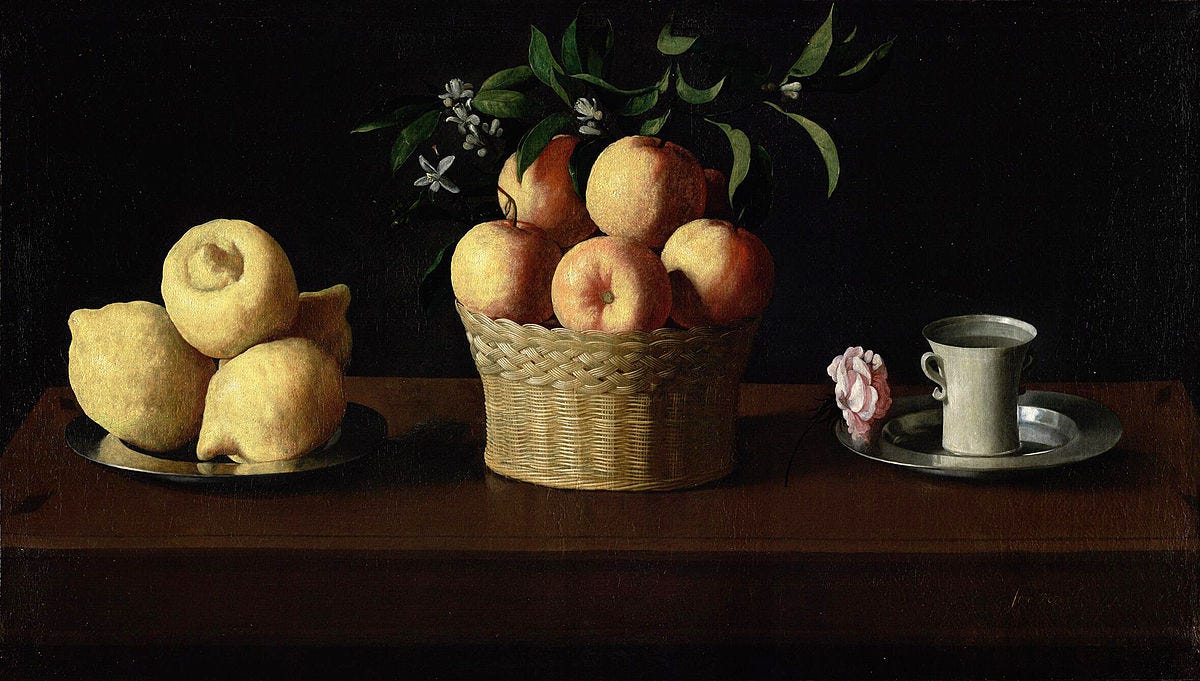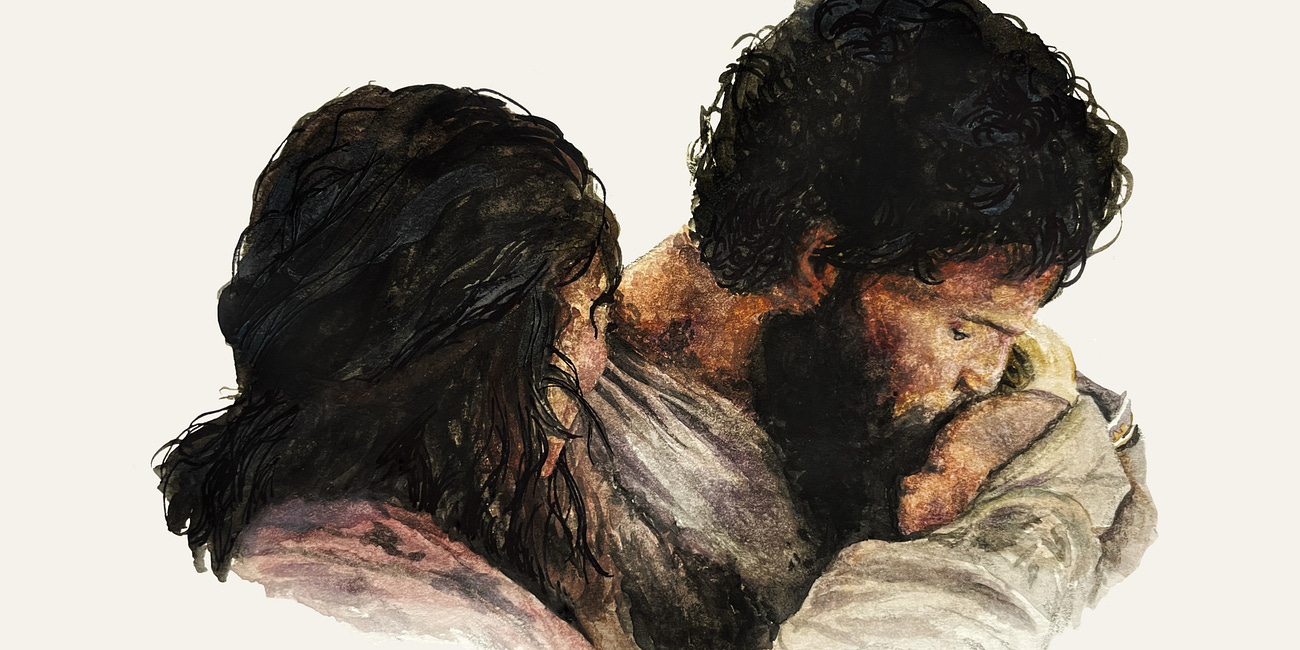Please, God
by Charlotte Wilson
Two months before Christmas, I miscarried. We think we can plan our families, reverse engineer that ideal June due date, conceive exactly when we want. But that doesn’t happen for everyone, and it didn’t happen for me.
I had what is technically called a “chemical pregnancy,” a miscarriage that occurs very early, sometimes even before a positive pregnancy test. But because I was tracking ovulation and cycle days, I’d been looking for it; I had the faintest of positive tests, those two lines weak yet still present, enough to calculate that the baby would indeed come in June. Except it didn’t.
I entered the holidays with sorrow and disappointment shrouding my heart. Please God, I prayed. Please lift this grief. Everything around me was primed for celebration: I had a two-year-old little boy, family visiting, and ample friends and loved ones to lean into. I wanted to experience the season the way I always had, to receive all the joy of Christmas. But this year, I couldn’t feel any of it.
Please God, let me feel Christmas, even for a moment. This prayer was my constant refrain, a desire so rooted in my heart that my lifeblood pumped this entreaty into every thought and breath, a fervent orison begging for reprieve.
And then God answered.
Unlike anything that has happened to me before or since, the grief lifted, a very literal clearing of my heart. I didn’t see a new star, no angels came to bear good tidings. But for two full weeks, I no longer felt the sorrow of quiet loss. I could smile, laugh, and feel every moment of that Christmas.
I hadn’t forgotten; I still very much wanted a second child. But the ache of the wanting and the pain of the loss had vanished. Against every expectation, Christmas was light that year. A week after the holiday, the grief returned, a familiar weight settling back into my chest. But God had given me undeniable respite and one of the most direct manifestations of divine love I’d ever witnessed.
We grieve because we love, proving that our love and our grief are different expressions of the same thing, however much we’d rather deny it. The babe born in a stable would one day weep over His friend before restoring life, weeping because He loved so deeply. He would grow into the man who retreated to pray when his cousin was executed by King Herod Antipas. This is the same being who allowed Mary Magdalene to weep at the empty tomb before revealing himself and alleviating her grief. As I enter each new Christmas season, some years more battered and weary than others, I find myself sitting more and more in that tension between love and grief. (Perhaps this is why I’m so drawn to Advent and the opportunity to find peace in liminality.)
Each Advent I close my eyes and go back to that silent Christmas miracle gifted me so many years ago. Please God, I whisper. What did that mean? I don’t know why I was surprised at the time at such a direct and unequivocal answer to prayer. (Isn’t it funny when we’re surprised that God does what They say They’ll do?)
Did Mary whisper a similar prayer when the angel visited her, proclaiming a future inconceivable? Please God, keep me safe. What about when she later lay next to barn animals with the Son of God cradled in her arms, pondering in her heart? Please God, show me the way. Or when she lost Jesus in the crowd at Jerusalem, afraid in the way only a parent could be? Please God, protect him. Forgive me. Lead us both. What was her prayer when, decades later, she knelt at the foot of the cross holding up her precious, firstborn son? Please God, make it stop. And then three days later, when she visited an empty tomb: Please, God. Thank you, thank you, alleluia.
Love is so transcendent that whenever we try to put words to it, we almost always fall short. Poets, playwrights, novelists, and essayists like myself try and try again, our words never quite hitting the mark. But we pour our imperfect efforts into the world trusting that the heart will know and hold fast to the knowing.
Whenever I plead Please God—and I have more times than I could ever count—I’m invited to accept His love by offering my trust. My mortal self wants to hold skepticism in the asking, wants to protect against rejection and disappointment. Why would God give me what I ask, anyway? Never mind that Jesus repeated over and over, “Ask and ye shall receive.” Ask, and I will feel loved. Ask, and I will learn trust. Ask, and I will know God a little better than I did yesterday.
Just a couple of months after that Christmas, I would experience another chemical pregnancy, the pain still poignant and isolating. But I didn’t forget what God had given me, couldn’t forget that They had once answered me so directly. In my heavy heart, I resolved to lean into God’s love by trusting Their fidelity. Love and grief are inextricable, and some Christmases we feel one more than the other. But the beauty of Advent, the miracle of Christmas, is that God keeps Their promises. They keep Their promises because of how deeply and fully They love. And when we practice receiving that love, we learn to ask, to trust, to love as They do.
Charlotte Wilson is an editor and writer running a small business between school pickups. She lives with her family in the Pacific Northwest, loves watching shows late at night with her husband, and ignores the laundry piles in favor of a good book.
Art by Lovetta Reyes-Cairo.
To participate in the Wayfare Advent series, first be sure you are subscribed, then click here and select “Holy Days” to receive weekly essays, music, art, and more during the Advent season.
Music
Love Came Down at Christmas (YouTube video)
Mystery of Love
by Greer Cordner
Morten Lauridsen said that a still life of fruit inspired the tone of his choral masterpiece “O Magnum Mysterium.” Although Lauridsen is not a Catholic, he’s drawn to the Holy Mother, and something about the painting felt like Mary to him. “I don’t have to belong to the Catholic Church to be in love with Mary,” Lauridsen told one interviewer, and the love he feels for her is evident in his stunning setting of text from a Christmas chant. As its title implies, “O Magnum Mysterium” marvels at the great mystery of Jesus’s birth by a virgin in a stable, and Lauridsen emphasized its veneration of Mary.
Like Lauridsen, I am not a Catholic, but last year I responded to my own pull toward the Holy Mother—and toward another Mary much closer to me—by teaching myself to pray the Rosary. It’s something I’ve watched my 99-year-old Irish Catholic grandmother, Mary O’Neill Pittenger, do on countless visits to her home in Western Pennsylvania. Grandma tunes into a guided Rosary program on TV, softly repeats the words of each prayer in the cycle, and focuses quietly through the readings of the scriptural passages that mark each of the five segments (“decades”) of the Rosary.
The Rosary and “O Magnum Mysterium” share a focus on divine mystery and adoration of Mary. Praying the Rosary largely consists of pondering biblical accounts of things that defy human understanding while repeating the Hail Mary and other venerations of the Mother of God. Each day of the week, and each season of the year, dictates which set of scriptures the petitioner contemplates, and the sets are themed the Joyful Mysteries, Sorrowful Mysteries, Glorious Mysteries, and Luminous Mysteries.
During Advent, the Rosary repeats the Joyful Mysteries more frequently than in other liturgical seasons. The scriptural passages in this set focus on the conception, birth, and childhood of Jesus, and the role of the grace-filled woman who carried and cared for him. As such, they illustrate the Advent theme Love in its most unfathomable manifestation: a virgin mother swaddling incarnate deity in a stable surrounded by animals.
Mary, the Mother of Jesus, embodied incomprehensible love; so, too, does Mary, the mother of my mother. Grandma loves her church, but loves her daughter more, so when my mom became a baptized Latter-day Saint in her 20s, Grandma continued to embrace her and learned to speak across a religious divide to teach her grandchildren to love Jesus. I’ve been the intended recipient of my grandmother’s requests for intercession to numerous saints, and I’ll never know how many Rosaries she’s prayed on my behalf. I feel her love. I love her too, and learning to pray the Rosary was my way of crossing our religious divide to learn a language of love I have often heard her speak.
Advent, the Rosary, Morten Lauridsen, and I celebrate the greatest mystery of Christmas: the love that binds God to humanity, and mothers to children. Glory Be.
Greer Bates Cordner is a Ph.D. candidate in American religious history at Boston University School of Theology.
Advent in Action
Ideas from contributors including Brigham Wilson, Cece Proffit, and others
If you have received Christmas cards this season, gather the cards and look through them, saying a prayer and expressing your love for everyone who sent you a card.
Make a special drink or treat to share with your loved ones and go around the table sharing things you love about each other, or ways you have shared and received love this year.
Practice loving kindness meditation.
Bake traditional German lebkuchen and swiss rolls for friends.
Deliver poinsettias to elderly neighbors living alone.
Assemble care packages for folks you know are suffering.
Kate Holbrook's Double Chocolate Bundt Cake
Curated by Sam Petersen
Celebrate Advent with Constant Wonder
Wayfare invites you to join Constant Wonder for their annual audio advent calendar, with a short episode every day from December 1 through Christmas. Each episode invites thoughtful reflection on the season, inspired by nature’s miraculous phenomena (from a turtle hibernating through the cold of winter to an ermine that teaches a writer forgiveness) as well as music and art traditionally connected with the biblical story of the Nativity.
We invite you to submit writing, poetry, and artwork on your experiences with love here, to be considered for publication during Advent 2025.



